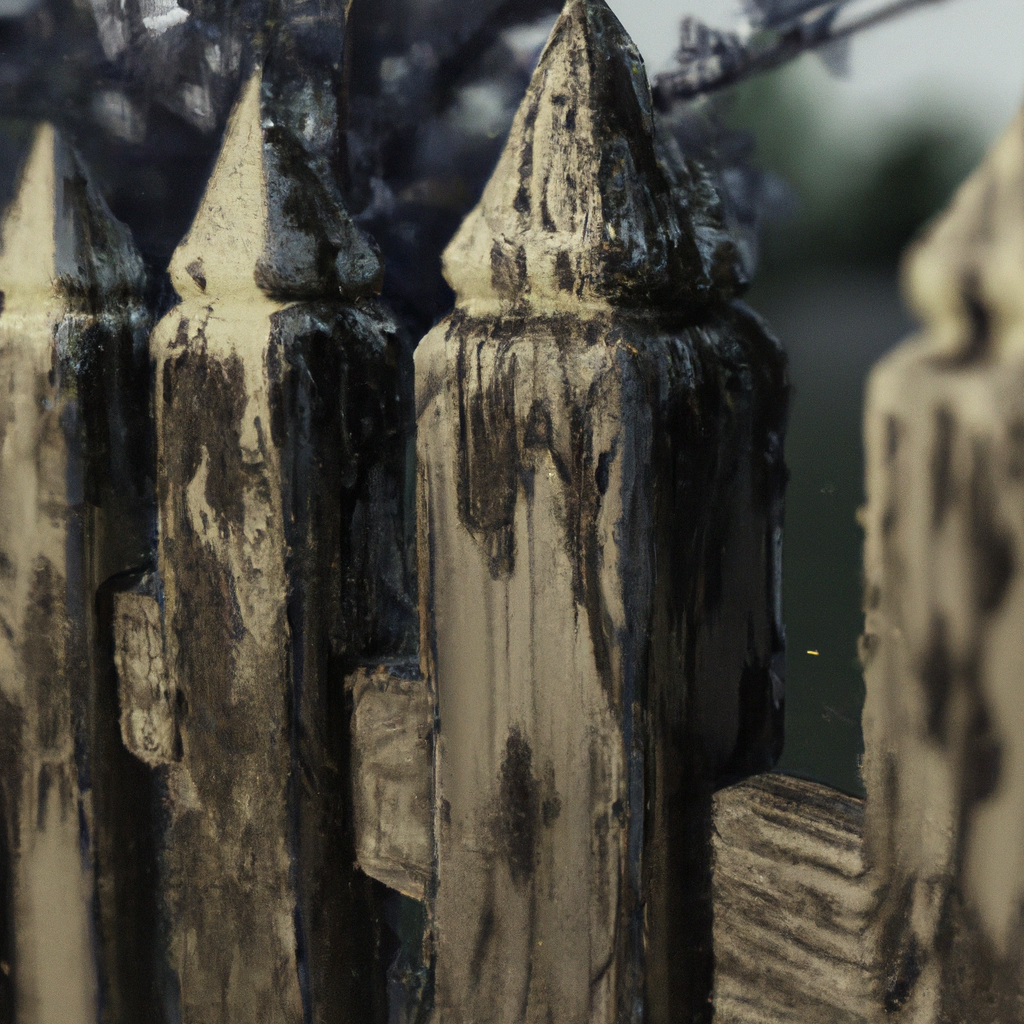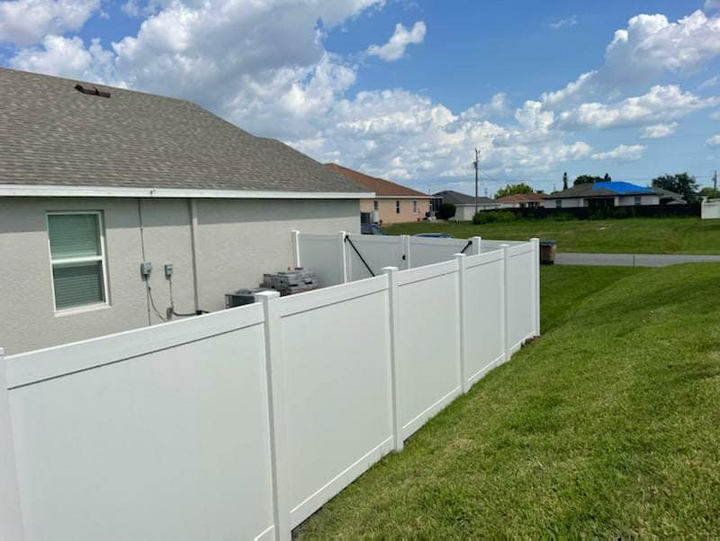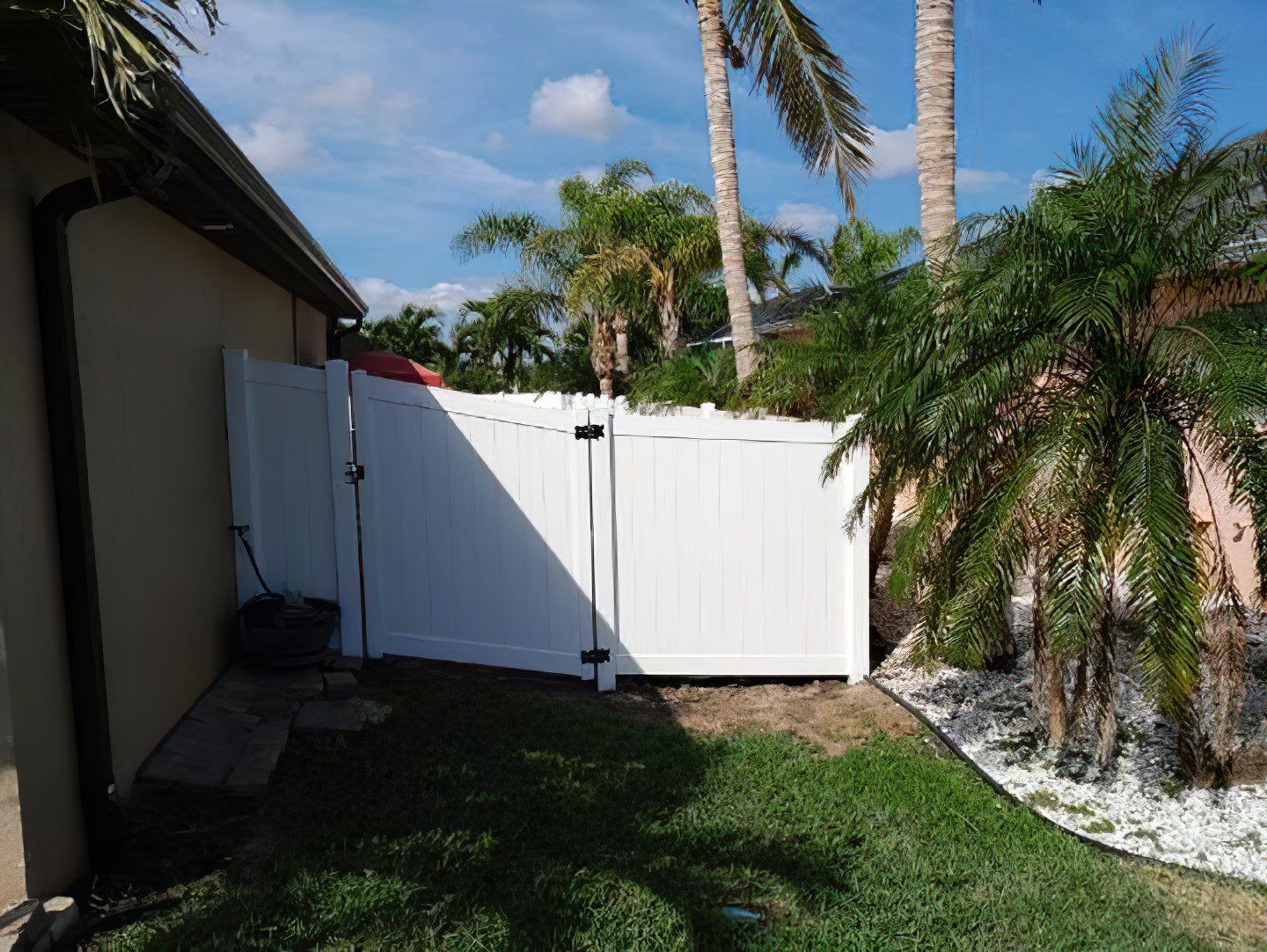Garden fencing is pivotal in yard design, serving practical and aesthetic purposes. It defines property…

How do you reinforce a rotting fence? – Dolphin Fence Corp
How to identify a rotting fence post
Spotting a decaying fence post is essential for its stability and safety. Signs of rot include soft spots, discoloration, and a smelly odor near the base. Also, you may see dust-like material if the wood is cracked or splintered. Monitor closely and look for any signs of damage to keep your fence secure.
Various approaches can be used to repair or reinforce a rotting fence post, depending on the severity. If it’s just a small area at the base, dig it up and replace it with wood. But, if it’s severely decayed, use metal or concrete supports. It’s always best to get advice from a pro before beginning repairs.
Periodic maintenance will help extend the life of the fence post and keep it in place. Seal it to protect against moisture and weather conditions that cause wood to rot. Call in pros if needed to ensure long-term fence security.
Fascinating fact: HomeAdvisor’s study shows that fence repair costs usually range from $250 to $750 in 2021.
Can a rotting fence post be repaired instead of replaced?
Don’t let your fence rot too much! Repair it instead of replacing it. Here’s how:
- Dig around the post to expose the soil at the bottom.
- Remove any debris or rotted wood.
- Fill the hole with new concrete and let it dry.
- Attach a strong metal brace for extra support.
- Paint or stain the post to blend in.
Check your fence regularly for signs of wear and tear. Cedar, redwood, and pressure-treated pine fences can last up to 20 years. But if your fence post is rotting, just tape it up and make it chic!
Solutions for repairing a rotting fence post without replacing it
To repair a rotting fence post without replacing it, there are several solutions with varying degrees of effectiveness. Using a fence post repair spur, installing a new post adjacent to the rotting one, using a concrete support, and using a metal brace are all options to consider. Each sub-section provides a unique approach to reinforce a rotting fence and prevent it from collapsing.
Using a fence post repair spur
Fence Post Repair Spur: A Practical Solution For a Rotting Fence Post
Using a repair spur is a great way to avoid replacing an entire fence post that has begun to rot. Here’s a six step process for fixing it up!
- Clean the area around the post.
- Dig a hole next to the post and make sure it’s deep enough for the spur.
- Attach the spur to the post with screws or bolts.
- Put the spur in the hole and fill it with concrete. Don’t overfill to ensure stability.
- Attach metal brackets to either side of the spur and put new posts on them.
- Make sure the posts match the old ones in terms of materials and aesthetics. Then, secure them onto the brackets.
Now you’ve fixed your post! Test your full weight on it before using it fully. This repair may cause inconsistencies with other posts since they might not match up anymore.
This method has been used all over the world with success! So why bother with a new neighbor when you can just get a new post?
Installing a new post adjacent to the rotting one
To repair a rotting fence post, why not try installing a new one adjacent to it? It’s much quicker and cheaper than replacing the entire fence. Here’s how:
- Clear away dirt, debris and roots around the decaying post.
- Measure the old post and find a similar replacement. Dig a hole for the new post next to the damaged one.
- Fill the hole with concrete mix and position your new post firmly. Let it dry overnight.
Be aware though: this solution only works if the fence structure is still in good condition. Placing a new post near a deteriorating fence may cause it to collapse further.
Using treated wood for your replacement posts is also a great idea. Treated lumber has protection against insects and water absorption, reducing future rotting.
It’s clear why this solution has been popular among those who have had fence repair issues. Concrete may not fix your relationships, but it’ll keep your fence post standing tall!
Using a concrete support
To fix a decaying fence post, follow these steps:
- Set up a concrete support.
- Dig around the post.
- Add cement and mix it with water as per the instructions on the packet.
- Place the support, making sure it is even and does not shift.
- Allow time for curing, and make sure no one enters or messes with it.
- Push wooden wedges against the pole to hold it in place.
- Add 2×4 planks and nail them into the sides of the post.
This will give you a stronger post.
For multiple weak posts, split them into groups and build supports for each one separately. If you think posts have been aging for a while, don’t wait – fix them now. A rotting post can break at any moment, so make sure you repair it before it becomes an even bigger problem.
Using a metal brace
Metal braces may be a suitable fix for a rotting fence post, rather than replacing it. They add support and stability to help the post last longer. Here’s how to use one:
- Dig around the post until you reach the concrete. Get rid of any debris and make sure the area is clear.
- Attach one side of the metal brace to the fence post with screws or bolts. Make sure it’s secure and in line with the fence.
- Attach the other side of the brace to a nearby sturdy support like a post or wall.
- Put some extra concrete mix in the hole around the post and let it dry overnight.
- Check that everything is straight and sturdy before using the fence again.
Not every rotting post is suited to braces. Some may need more repairs or replacing. Don’t wait when you first see signs of decay – the damage will get worse and cost more if you do.
Metal braces have been popular since long ago. Farmers used car parts to keep their structures safe in tough weather. Now, there are specialized braces designed for this purpose. Don’t let your posts rot like your ex – act fast!
Preventing rot in fence posts
To prevent rot in fence posts, you need to take a few precautions. With the right type of wood for fence posts, applying a protective finish to the wood, installing fence posts properly, and regular maintenance, you can prevent rotting. In this section, we will discuss the benefits of choosing the right type of wood for fence posts, applying a protective finish to the wood, installing fence posts properly, and regular maintenance to prevent rotting.
Choosing the right type of wood for fence posts
Fencing is a must to ensure privacy and safety. To prevent rot in fence posts, pick hardwoods like cedar, redwood, and cypress. Avoid softwoods like pine and spruce since they decay and get damaged by insects. Pressure-treated lumber warps and twists, so avoid that too. Treat lumber with copper-based preservatives that won’t corrode fasteners. Don’t use recycled wood or railroad ties as they contain creosote, a toxic chemical. Consult a pro for the best wood for your fencing project.
Proper installation is also important. Ensure drainage, seal end grain cuts with wax, and wrap them with membrane materials. Applying a sealant after installation can help extend their lifespan by avoiding moisture. Who knew protecting wood could be so cool? Time to get staining!
Applying a protective finish to the wood
To protect your fence posts from rot, coat the wood’s surface. This seals off the wood, stopping water from entering, which causes rotting. Follow these five steps to help you apply a protective finish:
- Select the right coating material. Oil-based products are best for exterior use due to their moisture resistance and durability.
- Clean the fence post with a hose or pressure washer to remove dirt, grime and debris.
- If painted/stained, use sandpaper to roughen up existing layers before applying new coatings.
- Ensure you have proper coverage when applying the protective coat. Use two coats of sealer for maximum protection.
- Let each coat dry before applying another. Also, monitor weather conditions to avoid rain on freshly coated surfaces.
These steps will help keep your fence looking great for years. Plus, regular monitoring and upkeep will maintain the fence’s integrity. Inspect it for signs of wear and tear, such as cracks or splinters that trap moisture and cause rot. Keep plants away and ensure proper drainage around your garden.
By taking action and implementing these steps, you can protect your fence post from rot and extend its life span. Plus, it will add value and beauty to your property. Don’t be afraid – protect your fence post now!
Installing fence posts properly
Install Fence Posts Right:
For a durable fence, install fence posts correctly. Doing it wrong leads to post rot and could cause the fence to fail.
- Pick the right post for your fence, dependent on things like soil and weather.
- Dig a 4ft deep hole, with the bottom wider for stability.
- Put concrete around the post in the hole, leaving no gaps.
- Wait for the concrete to cure before adding fencing materials.
More Info:
Properly set posts protect against rot by ensuring it won’t move or get wet. Secure all materials before finishing.
Action:
Don’t risk a fence failure from poor installation! Follow these steps for a solid foundation and wave goodbye to expensive repairs later. Keep your fence posts in good shape with regular maintenance – a shaky fence is just as trustworthy as a politician’s promise.
Regular maintenance to prevent rotting
Regular upkeep to preserve fence posts from decay is essential to keep your fencing durable. Not doing this can lead to damage and expensive repairs later. Here are some tips for maintenance to avoid rot:
- Inspect posts yearly for cracks, peeling varnish or paint, and wet patches around the post base.
- Remove any soil or debris that may have built up around the post’s bottom. This blocks ventilation and causes moisture to accumulate inside.
- Make sure cement footing goes slightly above ground level so that water drains away from the post.
- Don’t use concrete as a sealant near wooden posts since it locks in moisture and causes wood rot.
- If part of your fence gets wet often, apply sealant again.
- Use pressure-treated lumber when setting up new fence posts whenever possible since they are more rot-resistant than untreated wood.
It’s also important to inspect during extreme weather. By regularly making sure there aren’t any broken or low-quality materials, you won’t need to rebuild your fence due to things like heavy rain or snowstorms.
Pro Tip: Clean and maintain the look of your wooden fence with a coat of paint or varnish each year while inspecting its structural soundness. So I may not be able to prevent rot in my love life, but I can surely prevent it in my fence posts!
Frequently Asked Questions
1. How do you repair rotting wood post without replacing it?
Answer: There are a few methods you can try to repair a rotting wood post without replacing it. One method is to cut out the rotting part of the post and fill it with a wood filler, then sand it down to be smooth. Another method is to use a chemical wood hardener, which strengthens the remaining wood fibers.
2. Can you repair a rotting fence post?
Answer: Yes, it is possible to repair a rotting fence post. The level of repair needed will depend on the extent of the rot. If only the outer layer of the post is damaged, you can use a wood filler or wood hardener to salvage it. If the rot is extensive, it may be necessary to replace the post entirely.
3. How do you repair rotting wood post without replacing it?
Answer: You can repair a rotting wood post without replacing it by cutting out the rotten area and filling it with wood filler or using a chemical wood hardener to strengthen the remaining wood. Sand the area down to be smooth and then paint or seal the post to protect it from further damage.
4. What can I put on my fence to stop it rotting?
Answer: To stop your fence from rotting, you can apply a waterproof sealant to protect the wood from moisture. You can also use pressure-treated wood, which has been treated with chemicals to resist rot and decay. Another option is to use a metal post anchor, which will prevent the post from coming into direct contact with the soil.
5. Can you repair a rotting fence post?
Answer: Yes, you can repair a rotting fence post. If only a small portion of the post is rotten, you can cut it out and replace it with a new piece. If the rot is extensive, you may need to replace the entire post.
6. How do you reinforce a rotting fence?
Answer: To reinforce a rotting fence, you can install metal brackets or braces to strengthen the weak areas. You can also add additional support by installing a new post or attaching a horizontal support board to the existing post. It’s important to address any areas of rot as soon as possible to prevent the fence from collapsing.
Conclusion
Analyzing how to fix a decaying fence reveals multiple solutions. But, the extent of the damage and type of fencing matters. Options include fixing broken posts, reinforcing with stakes, or installing new braces. First, evaluate the state of the fence.
Tuff-Tube™ Vinyl Fence Brace is a cost-effective solution to reinforce, not replace, a decaying fence. It’s easy to install and restores stability and strength. Don’t let rot get worse – take action now to avoid higher costs later.
The American Fence Association states untreated wood fences last 5-7 years before suffering from damage due to moisture, pests or hurricane winds.



